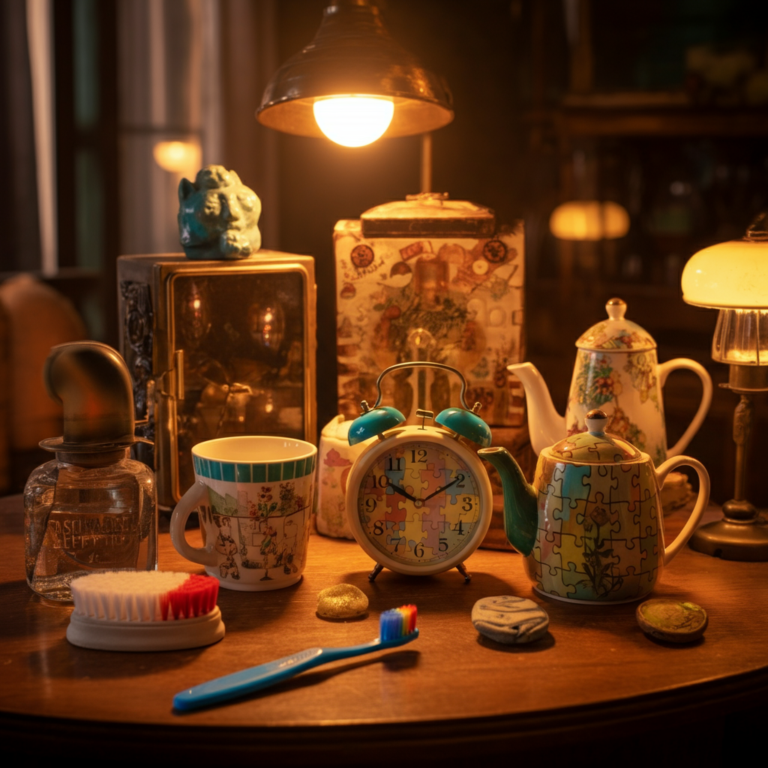Would you believe that the objects we use daily—many of which seem ordinary—carry fascinating histories, quirky design origins, and surprising uses? From the humble paperclip to the ingenious design of pockets, everyday items are packed with unexpected stories. This post dives into some of the most random fun facts about things you likely encounter every day, giving you insight into their origins and unknown quirks.
Whether you’re here to spark interesting conversations, impress your friends, or simply satisfy your curiosity, these facts are guaranteed to make you see the world around you a little differently.
The Hidden Wonders of Everyday Items
1. The Paperclip Hasn’t Always Looked This Way
Paperclips are a staple of office life, but did you know the modern design we’re familiar with today wasn’t the original? The iconic double-loop design, known as the “Gem Paperclip,” originated in the late 1800s and remains unchanged due to its simplicity and utility. Surprisingly, the paperclip’s original designs before this were far more elaborate, with some including multiple prongs and complex shapes.
Cool Fact: During World War II, Norwegian citizens wore paperclips on their lapels as a symbol of solidarity and resistance against Nazi occupation. It was a subtle yet powerful sign of unity.
2. Pockets Were Once Considered a Luxury
Today, we can’t imagine outfits without pockets, but did you know pockets weren’t always a standard feature in clothing? Before the 17th century, both men and women used small pouches tied around their waists to carry essentials. Over time, men’s clothing began incorporating sewn-in pockets, but women’s outfits continued to rely on external pouches—an inconvenience that persisted for centuries.
Quirky Twist: Women’s clothing often features smaller or even nonfunctional pockets today, leading to constant debate and advocacy for “real pockets” as a standard.
3. Post-It Notes Were Invented by Accident
If you’ve ever stuck a note to your desk or computer, you’ve benefited from a happy accident. Post-it Notes were a serendipitous invention by Dr. Spencer Silver, a scientist at 3M. While attempting to create a super-strong adhesive, he ended up with a weak, pressure-sensitive glue. Years later, a colleague realized the adhesive could be applied to paper, and the Post-it Note was born.
Fun Insight: Despite their accidental invention, Post-it Notes have become a global phenomenon, with over 50 billion squares produced annually.
4. Toothbrushes Once Used Hog Hair
Toothbrushes are essential for dental hygiene, but their history might make you do a double take. Before nylon bristles were invented in the 1930s, toothbrush bristles were made from hog, horse, or badger hair. These natural bristles were inserted into handles crafted from bone or wood.
Did You Know? The modern bristle toothbrush was first mass-produced in 1780 by a man named William Addis while he was imprisoned in England.
5. Doorknobs Can Clean Themselves (Kind Of)
Brass doorknobs are more than just classy—they’re self-sanitizing! Due to the oligodynamic effect, brass, copper, and other similar metals kill bacteria and germs over time. This makes brass an excellent material for high-contact surfaces like doorknobs.
Health Fact: Studies show that some bacteria on brass surfaces die within hours, making it a natural choice for hygiene-conscious designs.
6. The QWERTY Keyboard Was Designed to Slow You Down
Ever wondered why keyboards use the QWERTY layout instead of alphabetical order? The layout was created in the 1870s by Christopher Sholes, the inventor of the typewriter. It was designed to reduce the likelihood of typebars jamming by spacing commonly used letters apart.
Pro Tip: If you’re after speed, consider learning the Dvorak keyboard layout, which optimizes key placement for faster typing.
7. Bubble Wrap Was Originally Meant to Be Wallpaper
It’s hard to imagine bubble wrap as anything other than the protective packaging we love popping. However, it was originally conceived in 1957 by engineers Alfred Fielding and Marc Chavannes as a form of textured wallpaper. Needless to say, the idea didn’t catch on. Instead, the material found its calling in the packaging industry.
Bonus Trivia: Bubble Wrap has its own holiday! The last Monday of January is celebrated as Bubble Wrap Appreciation Day.
8. Umbrellas Were Once Exclusively for Women
Though we use umbrellas to stave off rain and sun, they weren’t always considered unisex. Umbrellas were mainly associated with women’s fashion in 18th-century Europe, while men used cloaks or hats for protection. By the late 18th century, umbrellas became widely accepted for all genders, thanks in part to English philanthropist Jonas Hanway.
Style Fact: The word “umbrella” derives from the Latin “umbra,” meaning shadow.
9. The Ballpoint Pen Took Over 50 Years to Perfect
The ballpoint pen is a writing tool we rely on daily, but it took decades of innovations to create the smooth-writing instruments we use today. László Bíró, a Hungarian journalist, patented the modern version in 1938. Before his invention, fountain pens were prone to smudging, and early ballpoint pens often leaked.
Manufacturing Feat: Modern ballpoint pens are marvels of precision engineering, with each pen tip made to micron-level accuracy.
10. Velcro Was Inspired By Nature
Velcro, the handy hook-and-loop fastening system invented by Swiss engineer George de Mestral, was inspired by burdock burrs. After examining how the burrs stuck to his dog’s fur under a microscope, he mimicked their design, filing a patent for Velcro in 1955.
Cool Application: Velcro is widely used in spacesuits, allowing astronauts to secure objects in zero gravity.
11. The Shopping Cart Was Born Out of a Need for More Sales
Sylvan Goldman, the owner of a chain of grocery stores in the 1930s, invented the shopping cart to encourage customers to buy more items. Initially, the carts weren’t well received, and Goldman had to hire actors to push carts around his store to make them seem popular.
Marketing Genius: Today, shopping carts are a standard feature in grocery stores worldwide, evolving with consumer needs and technology.
Here’s What You’ll Notice Next Time
Everyday objects might seem ordinary, but they carry history, creativity, and sometimes sheer luck in their origins. Whether reinvented for convenience, born out of necessity, or inspired by nature, these items are a testament to human ingenuity.
The next time you pick up a ballpoint pen, stick a Post-it Note, or type on your QWERTY keyboard, take a moment to appreciate its unique story. Perhaps, you’ll even start spotting more hidden details and quirks in everyday things around you.





















0 Comments